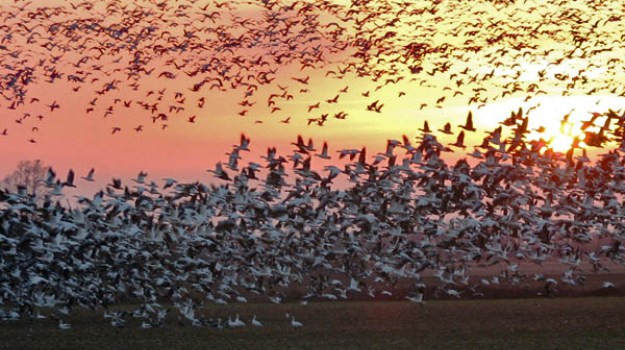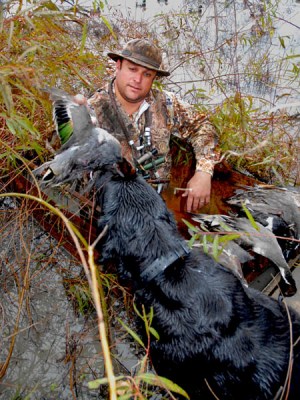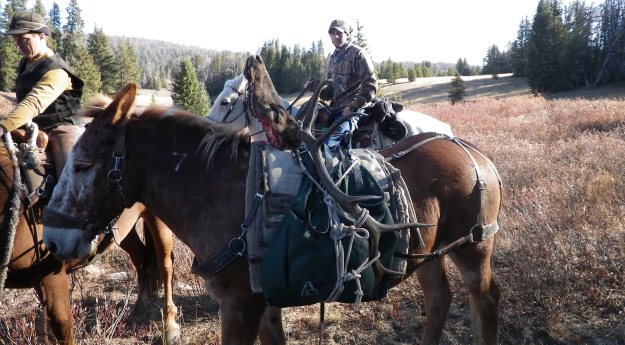
Day 1: Honey Brake Lodge Sees 100,000 to 250,000 Ducks During the Opening of Louisiana’s Duck Season
featuring Drew Keeth
Editor’s Note: The South usually is the worst place in the world to hunt early-season ducks. Canada and the Northwest and Midwest have been the Mecca of early-season duck hunting. However, one place in the Southeast that will rival the duck hunting in Canada and the Northwest is Honey Brake Lodge in Jonesville, Louisiana. Many swarming flocks of waterfowl pile into Honey Brake. To find out why, Mossy Oak has interviewed Drew Keeth, general manager of Honey Brake Lodge. Keeth and all his guides wear Mossy Oak camouflage, because Mossy Oak patterns like the new Shadow Grass Blades blend-in so well with the duck blinds.
Most waterfowl hunters believe Louisiana is the last place on God’s green earth where they’ll want to be in the opening week of duck season. However, we’ll have 100,000 to 250,000 ducks here at Honey Brake Lodge opening week. We have so-many ducks, because we’re on the edge of Catahoula Lake, between the lake and the Mississippi River. We have the closest agricultural fields to the Mississippi River where ducks can feed.
 When the Louisiana Delta was cleared in 1964, the ducks came north and stopped off at Catahoula Lake. So, today, regardless of weather conditions, we will have tons of ducks all year long. Our duck season usually begins at the first of November. At that time of year, we’ll have temperatures of 70 and 80 degrees. We still will have large numbers of pintails, mallards, gadwalls, teal and other ducks already at Honey Brake when the season opens. Many hunters fail to realize large numbers of ducks come down the Mississippi Flyway with the teal we hunt in early September. Nobody put up a sign on the Canadian border that said only teal could come down the flyway in late August and early September, so we get a huge push of all kind of ducks just before teal season begins. Many of those ducks don’t head back north until spring. Since the weather is so mild, and the food is so abundant, many of those ducks stay year-round and hatch their eggs here. We also get numbers of white-fronted (specklebelly) geese down from Canada before early teal season.
When the Louisiana Delta was cleared in 1964, the ducks came north and stopped off at Catahoula Lake. So, today, regardless of weather conditions, we will have tons of ducks all year long. Our duck season usually begins at the first of November. At that time of year, we’ll have temperatures of 70 and 80 degrees. We still will have large numbers of pintails, mallards, gadwalls, teal and other ducks already at Honey Brake when the season opens. Many hunters fail to realize large numbers of ducks come down the Mississippi Flyway with the teal we hunt in early September. Nobody put up a sign on the Canadian border that said only teal could come down the flyway in late August and early September, so we get a huge push of all kind of ducks just before teal season begins. Many of those ducks don’t head back north until spring. Since the weather is so mild, and the food is so abundant, many of those ducks stay year-round and hatch their eggs here. We also get numbers of white-fronted (specklebelly) geese down from Canada before early teal season.
We have 120 waterfowl blinds on the farm at Honey Brake and 9 blinds on Catahoula Lake. Because we have so-many blinds, we can rotate the hunting pressure and keep ducks from picking up and leaving during duck-hunting season. Honey Brake is on an old lake bed in the lowest part of the Louisiana Delta Plantation, one of the largest farms in the United States. The Louisiana Delta Plantation owners put Honey Brake into the Natural Resources Conservation Service’s Wetland Reserve Program. We planted more than 1/2-million trees in 2005. Now, we have 4,000 acres of shallow-water areas for the ducks and do moist-soil management specifically for wildlife and ducks in that section of the farm. The main part of the farm produces soybeans and milo and also corn, wheat, rice and cotton. There’s plenty of food and shallow-water habitat for the ducks year-round. We have any kind of habitat a duck prefers, from the big water of Catahoula Lake and the Mississippi River to shallow-water habitat and flooded-timber areas. So, whether the ducks want to float on the water, feed in shallow water, nest near shallow water or eat until they pop, we have everything a duck can want here at Honey Brake. And, that’s why we have 100,000 to 250,000 ducks at the beginning of duck season at Honey Brake.
For more information, visit http://honeybrake.com/, or call 318-775-1007.
Tomorrow: How We Hunt Ducks at Honey Brake Lodge with Drew Keeth






























